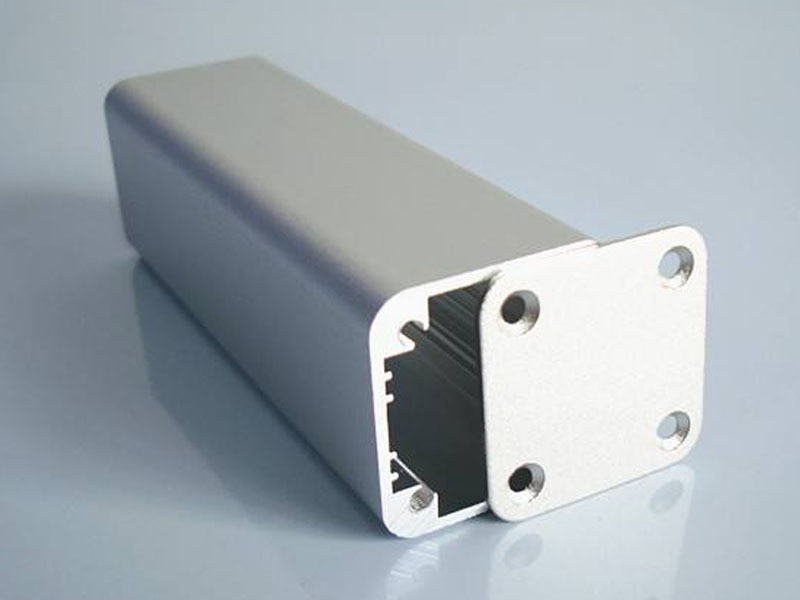With the development of society and the advancement of technology, equipment manufacturers have higher and higher requirements for the internal quality and appearance of aluminum alloy shell parts. In order to meet the ever-increasing internal quality and appearance requirements, manufacturers have adopted various methods to improve the internal and external quality of aluminum alloy shell parts. In production practice, the external quality of aluminum alloy parts is often improved by anodizing surface treatment process.

After anodizing treatment, a layer of anodic oxide film with a certain thickness, strength and beautiful appearance can be formed on the surface of the aluminum alloy shell parts. Through electron microscope observation, it can be found that the structure of the anodic oxide film is honeycomb, and the center has a micropore that grows perpendicular to the surface of the aluminum substrate, showing the beauty of the shape that cannot be seen in other surface treatments. Then the anodic oxide film is electrolytically colored and then sealed to obtain unique and beautiful colors. The anodic oxidation film has stable performance and long-term durability. Therefore, anodic oxidation is a common application in the current production and processing of aluminum alloy shell parts.
The anodic oxidation process can form a film with a certain thickness, strength and certain characteristics on the surface of the aluminum alloy shell parts without changing the original shape of the parts. In order to obtain a highly aesthetic appearance, it is required that the surface of the parts before anodization be treated to a certain degree of smoothness, and the surface should be clean and free of other impurities. However, due to various factors in the anodizing process of aluminum alloy shell parts, the oxide film appears uneven and the anodizing effect is not ideal.
The research results show that the factors that affect the quality of the anodic oxide film are as follows:
The influence of alloy chemical composition in aluminum. In order to improve the mechanical properties and chemical properties of aluminum alloys, a small amount of copper, silicon, and iron are usually added to aluminum. After alkali etching treatment, aluminum is first dissolved, while copper, silicon and iron are left on the surface to form "ash", resulting in uneven anodic oxide film, affecting the reflectivity, color and corrosion resistance of the oxide film.
The influence of foreign impurities in aluminum. The "metallic bright lines", "end marks" and "stripe marks" produced during rolling become obvious after anodizing. The influence of the rolling process. After rolling, the grain size and shape of aluminum change, and after alkali etching treatment, the surface is rough due to preferential erosion, which affects the quality of the oxide film.
The effect of heat treatment. Since the failure treatment is mainly based on optimizing the mechanical properties, the grain size changes greatly, which is not conducive to the production of a uniform anodic oxide film.
The influence of the mold, the surface roughness of the mold directly affects the surface roughness of the extruded aluminum profile. Due to the defects and impurities of the aluminum alloy shell parts before the anodization treatment, when the surface anodization treatment is carried out, the surface current will be uneven, and the electrolyte flow speed will vary, resulting in uneven surface treatment. State, formation and obvious black stripes. Due to the presence of impurities on the surface of the anodizing treatment, the anodic oxide film is not uniform, affecting the reflectivity, color and corrosion resistance of the oxide film, and directly affecting the quality of the anodizing treatment. Too high magnesium will affect the transparency of the film; too high silicon will change the color of the film from colorless and transparent to gray, purple and finally black. The color is dark, not shiny, and reduces the bonding ability of the anodic oxide film with the substrate, and cracks on the surface of the film.
Studies have shown that the aluminum alloy shell parts themselves have streak defects and impurities, causing black stripes in some places after anodized surface treatment, and the color is dark and not shiny, which directly affects the appearance of the aluminum alloy shell. Due to the presence of impurities in the aluminum alloy shell parts before the treatment, they were not completely removed in time after the alkaline washing. The "stripe" defects generated during the rolling process were not completely removed during the polishing treatment, resulting in the current failure during the surface anodizing treatment. Uniformity, resulting in small black dots and streamlined stripes with a certain direction of silver and black on the surface of the oxide film
In order to improve the surface quality of aluminum alloy shell parts, while further optimizing the anodizing process, the internal and external quality inspection of aluminum alloy shell parts before oxidation treatment must be done, and the aluminum composition, rolling production, heat treatment process and mold must be strictly controlled. The quality of anodic oxidation provides good quality aluminum alloy shell parts, which lays a solid foundation for ensuring the quality of anodic oxidation.
JY Machinery is an enterprise specializing in the processing of aluminum alloy shell parts for a long time. It provides design and production processing of aluminum alloy cavity shells, shells and other parts. It has accumulated rich experience in CNC machining and anodizing. Manufacturers in industries such as environmental protection and energy saving, electronic appliances and automobiles provide high-quality supporting processing services.
Get your CNC machining Aluminum Shell projects started today
When you send out 3D CAD documents to us, JY Machinery will provide you with instant price, on-demand delivery time, as well as design for manufacturability comments for your customized CNC machining components on materials and also producing process, to make sure that the component can meet your expectations as well as budget plan demands.
评论
发表评论